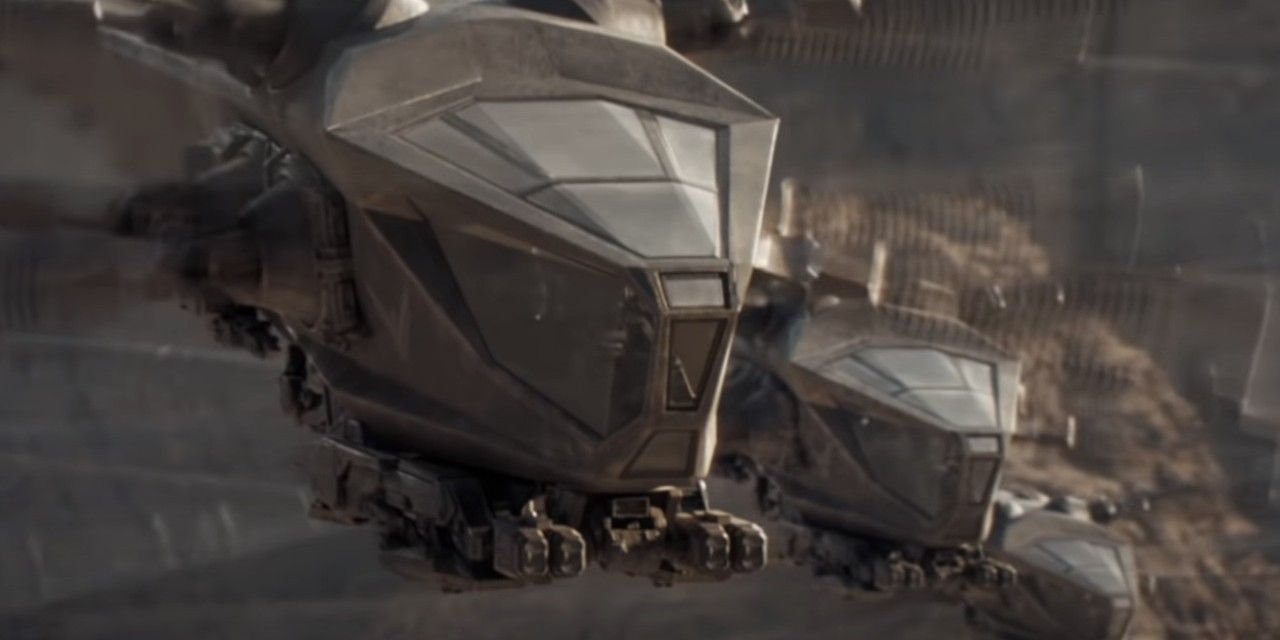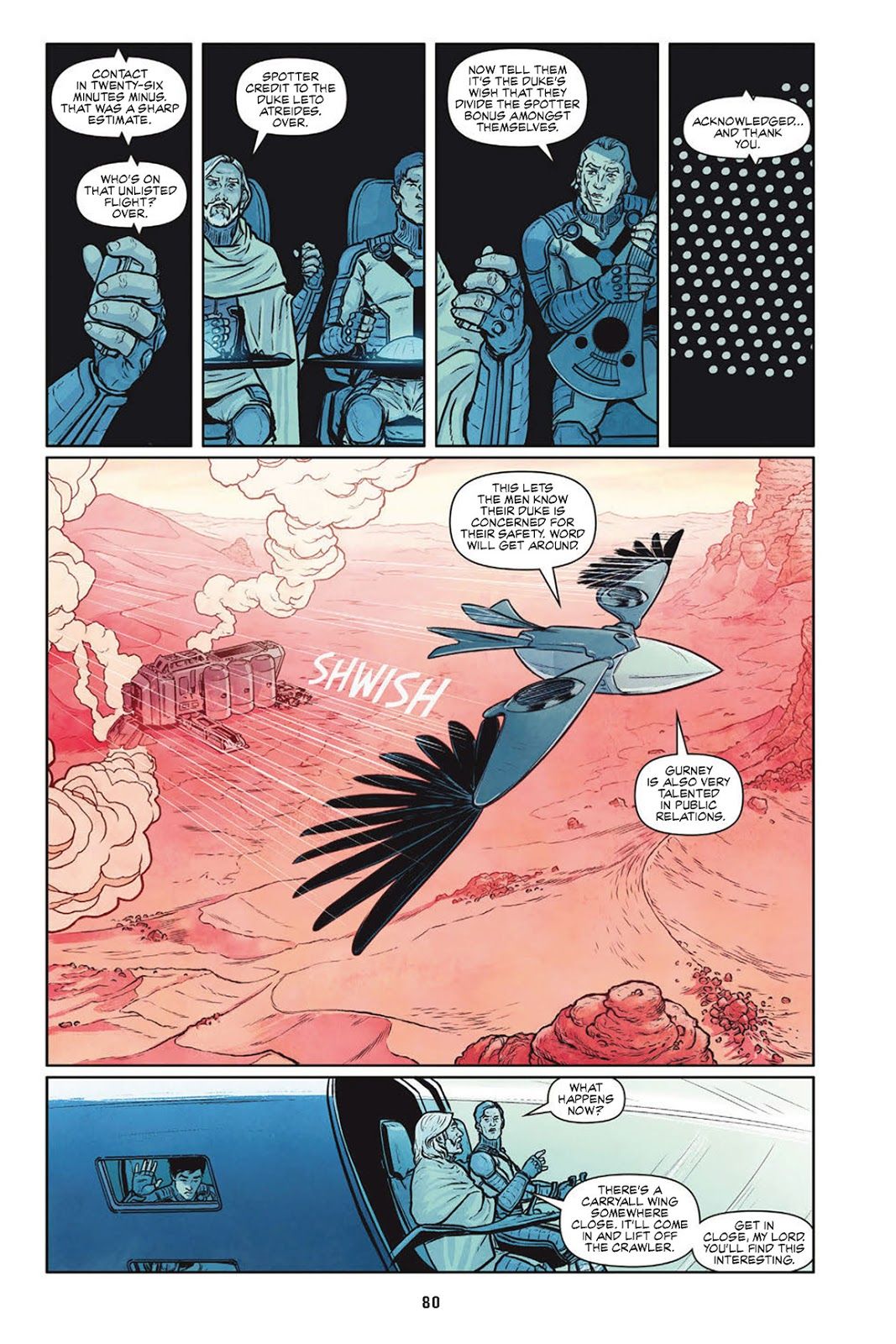Denis Villeneuve's Dune is a critical and commercial hit, earning $293,000,000 at the international box office in just under one month. The director certainly has an eye for spectacle, and the power of the images - many of which have been taken straight from the books - is often highlighted as a high point in official reviews. However, one crucial detail concerning one of Dune's signature machines was changed, making for a glaring inaccuracy in the film - but not in the official graphic novel of the first Frank Herbert book, released in 2016.
Adapted by Brian Herbert (Frank Herbert's son), and Kevin J. Anderson with art by Raúl Allén and Patricia Martín, Dune is a remarkably faithful adaptation of the legendary novel. Frank Herbert's work has plenty of imagery and plot points most science fiction fans will find awfully familiar: a desert planet, massive creatures lurking beneath the sand, personal energy shields, a mystical order of secretive sorcerers, and an Emperor who wields supreme power and pits the factions of the galaxy against one another in order to retain control over his domain. But one particular invention of Herbert's is rarely seen outside of the Dune universe: the ornithopter, or 'thopter.
An ornithopter is a flying vehicle that achieves lift primarily through flapping wings. Neither David Lynch's 1984 Dune film nor the 2000 Sci-Fi Channel miniseries used 'true' ornithopters (they were mostly fixed-wing aircraft), but 2021's Dune breaks the cycle by creating small, helicopter-like vehicles on Arrakis that achieve lift through eight wings (more in the heavy variant used by House Harkonnen). But these craft are clearly based on dragonflies; the ornithopters in the novels are not.
In the books, the 'thopters are written as bird-like machines with a similar profile. The dragonfly-'Thopter in Villeneuve's Dune certainly look aggressive and appears considerably more physically believable as a flying machine than the variant in David Lynch's film, but sacrifices book accuracy in the process. Other changes are more drastic: the character Kynes has been changed from a man to a woman, and there is no mention of the word Jihad in the film at all; Villeneuve opts to use the phrase crusade as a substitute (the irony to end all ironies when one takes into account the historical Crusades by Christians against the Muslims in the 11th century!), but the 'Thopters are the most immediately-identifiable deviation.
Dune is by all means a stunning cinematic achievement, and in the grand scheme of things small departures from the source material can be overlooked. The new ornithopters certainly look impressive, if not entirely book-accurate. But the graphic novel Dune remains the most faithful adaption of Frank Herbert's original classic.


